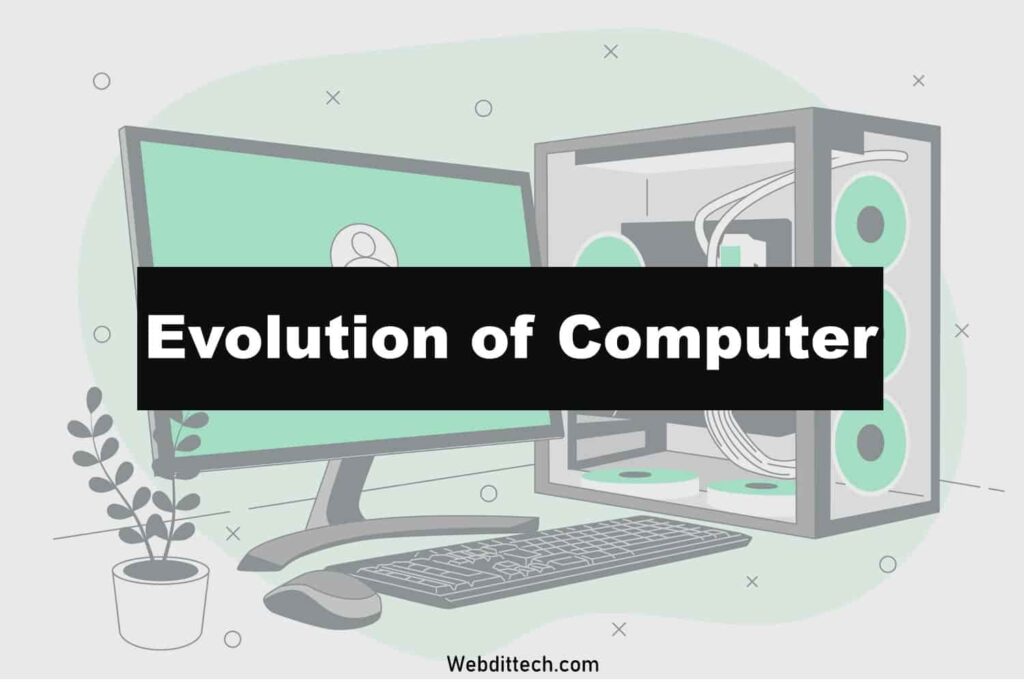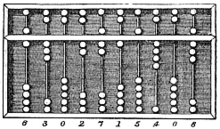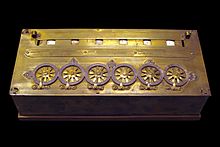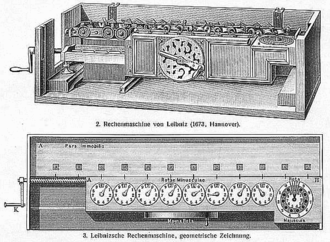Computer technology has made incredible progress in the past half-century. In 1945, there were no stored-program computers. Today, a few thousand rupees will purchase a personal computer that has more performance, more main memory, and more disk storage than a computer bought in 1965 for 10 million rupees.
This rapid rate of improvement has come both from advances in the technology used to build computers and from innovations in computer design. While technological improvements have been fairly steady, progress arising from better computer architectures has been much less consistent. During the first 25 years of electronic computers, both forces made a major contribution.

Hundreds of different kinds of computers have been designed and built during the evolution of the modern digital computer. Most have been long forgotten, but a few have had a significant impact on modern ideas.
In this section, we will give a brief sketch of some of the key historical developments in order to get a better understanding of how we got where we are now.
The following are the Era of the evolution of computer:
- Mechanical Era
- First Generation of Computer (1940 to 1956)
- Second Generation of Computer 1956 to 1963
- Third Generation of Computers 1964 to 1971
- Fourth Generation of Computers 1971 to Present
- Fifth Generation of Computers Present to Next Generation
Computer Generations
Computers at various stages of their evolution have been divided into five generations. Every new generation has certain major improvements when compared to its previous generations. These improvements were the result of the technology used for building the computer, the programming languages used, and the computer system‘s internal organization.
Mechanical Era
Until the development of the first generation computers based on vacuum tubes, there had been several developments in computing technology related to mechanical computing devices, and it has been termed the mechanical era. The key developments that took place till the first computer was developed are as follows:
- Calculating Machines
- Napier Bones
- Slide Rule
- Pascaline
- Leibniz’s Multiplication and Dividing Machine
- Punched Cards
Calculating Machines
ABACUS was the first mechanical calculating device for counting large numbers. The word ABACUS means calculating board. It consists of bars in horizontal positions on which sets of beads are inserted.

The horizontal bars have 10 beads each, representing units, tens, hundreds, etc. abacus can perform addition, subtraction, division, and multiplication. It can also be used for extracting square roots and cubic roots.
Napier Bones
Napier‘s bones were a mechanical device built for the purpose of multiplication in 1617 AD by an English mathematician John Napier.

Slide Rule
Slide Rule was developed by an English mathematician Edmund Gunter in the 16th century. Using the slide rule, one could perform operations like addition, subtraction, multiplication, and division. It was used extensively till late.
Pascaline
Pascal’s Adding and Subtraction Machine was developed by Blaise Pascal. It could add and subtract. Pascaline had a series of wheels with teeth that could be turned using a hand and it was used to handle numbers up to 999,999,999.

Leibniz’s Multiplication and Dividing Machine
Leibniz’s Multiplication and Dividing Machine was a mechanical device that could both multiply and divide. The German philosopher and mathematician Gottfried Leibniz built it around 1673.

Punched Cards
Herman Hollerith an American inventor developed devices that were able to read the information that had been punched into the cards automatically. Punched card reader could recognize the presence of a hole in the punched card as a binary one and the absence of the hole as a binary zero. The 0s and 1s are the basis of the modem digital computer.
5 Generations of Computer
The term “generation of computers” refers to the different stages or eras of computing technology, each characterized by a distinct set of technological advancements, design features, and capabilities. There are typically five generations of computers:
- First Generation of Computer (1940 to 1956)
- Second Generation of Computer 1956 to 1963
- Third Generation of Computers 1964 to 1971
- Fourth Generation of Computers 1971 to Present
- Fifth Generation of Computers Present to Next Generation
First Generation of Computer (1940 to 1956)
First generation of computers have the following specifications:
Hardware Technology
Hardware Technology: The first generation of computers used vacuum tubes (as shown in the figure) for circuitry and magnetic drums for memory. The input to the computer was through punched cards and paper tapes. The output was displayed as printouts.
- Software Technology: The instructions were written in machine language. Machine language uses 0s and 1s for coding the instructions. The first-generation computers could solve one problem at a time.
- Computing Characteristics: The computation time was in milliseconds.
- Physical Appearance: These computers were enormous in size and required a large room for installation.
- Application: They were used for scientific applications as they were the fastest computing device of their time.
- Examples: Universal Automatic Computer (UNIVAC), Electronic Numerical Integrator and Calculator (ENIAC), and Electronic Discrete Variable Automatic Computer (EDVAC).
The first generation computers used a large number of vacuum tubes and thus generated a lot of heat. They consumed a great deal of electricity and were expensive to operate.
The machines were prone to frequent malfunctioning and required constant maintenance. Since first generation computers used machine language, they were difficult to program.
Second Generation of Computer 1956 to 1963
Second generation of computers have the following specifications:
- Hardware Technology: Transistors replaced the vacuum tubes of the first generation of computers. Transistors allowed computers to become smaller, faster, cheaper, more energy-efficient, and more reliable. The second generation computers used magnetic core technology for primary memory.
They used magnetic tapes and magnetic disks for secondary storage. The input was still through punched cards and the output using printouts. They used the concept of a stored program, where instructions were stored in the memory of the computer. - Software Technology: The instructions were written using the assembly language. Assembly language uses mnemonics like ADD for addition and SUB for subtraction for coding of the instructions. It is easier to write instructions in assembly language, as compared to writing instructions in machine language. High-level programming languages, such as early versions of COBOL and FORTRAN were also developed during this period.
- Computing Characteristics: The computation time was in microseconds.
- Physical Appearance: Transistors are smaller in size compared to vacuum tubes, thus, the size of the computer was also reduced.
- Application: The cost of commercial production of these computers was very high, though less than the first generation computers. The transistors had to be assembled manually in second generation computers.
- Examples: are TRADIC (Transistor Digital Computer), IBM 704, and LARC (Livermore Atomic Research Computer).
Second generation computers generated a lot of heat but much less than first generation computers. They required less maintenance than the first generation computers.
Third Generation of Computers 1964 to 1971
Third generation of computers has the following specifications:
- Hardware Technology: The third generation of computers used Integrated Circuit (IC) chips. In an IC chip, multiple transistors are placed on a silicon chip. Silicon is a type of semiconductor.
The use of IC chips increased the speed and the efficiency of computers, manifold. The keyboard and monitor were used to interact with the third generation of computers, instead of the punched card and printouts. - Software Technology: The keyboard and the monitor were interfaced through the operating system. The operating system allowed different applications to run at the same time. High-level languages were used extensively for programming, instead of machine language and assembly language.
- Computing Characteristics: The computation time was in nanoseconds.
- Physical Appearance: The size of these computers was quite small compared to the second generation computers.
- Application: Computers became accessible to mass audiences. Computers were produced commercially and were smaller and cheaper than their predecessors.
- Examples: CDC 7600, PDP 8, INTEL 4004, INTEL 8008.
The third generation computers used less power and generated less heat than the second generation computers. The cost of the computer was reduced significantly, as individual components of the computer were not required to be assembled manually. The maintenance cost of the computers was also less compared to their predecessors
Fourth Generation of Computers 1971 to Present
The fourth generation of computers has the following specifications:
Hardware Technology They use the Large Scale Integration (LSI) and the Very Large Scale Integration (VLSI) technology. Thousands of transistors are integrated on a small silicon chip using LSI technology. VLSI allows hundreds of thousands of components to be integrated in a small chip.
This era is marked by the development of microprocessors. A microprocessor is a chip containing millions of transistors and components, and, designed using LSI and VLSI technology. A microprocessor chip is shown in figure. This generation of computers gave rise to Personal Computer (PC).
Semiconductor memory replaced the earlier magnetic core memory, resulting in fast random access to memory. Secondary storage devices like magnetic disks became smaller in physical size and larger in capacity.
The linking of computers is another key development of this era. Computers are linked to form networks that led to the emergence of the Internet. This generation also saw the development of pointing devices like mouse, and handheld devices.
- Software Technology: Several new operating systems like MS-DOS and MS Windows are developed during this time. This generation of computers supported Graphical User Interface (GUI). GUI is a user-friendly interface that allows users to interact with the computer via menus and icons. High-level programming languages are used for the writing of programs.
- Computing Characteristics: The computation time is in picoseconds.
- Physical Appearance: They are smaller than the computers of the previous generation. Some can even fit into the palm of the hand.
- Application: They became widely available for commercial purposes. Personal computers became available to the home user.
- Examples: APPLE I was a single board computer. In 1981, IBM introduced the first computer for home use. In 1984, Apple introduced the Macintosh.
The microprocessor result the fourth generation computers being smaller and cheaper than their predecessors. The fourth generation computers are also portable and more reliable.
They generate much lesser heat and require less maintenance compared to their predecessors. GUI and pointing devices facilitate easy use and learning on the computer. Networking has resulted in resource sharing and communication among different computers.
Fifth Generation of Computers Present to Next Generation
Fifth generation computing is to develop computers that are capable of learning and self- organization. The fifth generation computers use Super Large Scale Integrated (SLSI) chips that are able to store millions of components on a single chip.
These computers have large memory requirements. This generation of computers uses parallel processing that allows several instructions to be executed in parallel, instead of serial execution.
Parallel processing results in faster processing speed. The Intel dual-core microprocessor uses parallel processing. The fifth generation computers are based on Artificial Intelligence (AI).
They try to simulate the human way of thinking and reasoning. Artificial Intelligence includes areas like Expert System (ES), Natural Language Processing (NLP), speech recognition, voice recognition, robotics, etc.
FAQs About the Evolution of Computers
What are the five generations of computers?
These are the five generations of computers:
1. First Generation of Computer: Vacuum Tubes
2. Second Generation of Computer: Transistors
3. Third Generation of Computers: Integrated Circuit (Ic) Chips
4. Fourth Generation of Computers: Microprocessors
5. Fifth Generation of Computers: Artificial Intelligence (AI)
